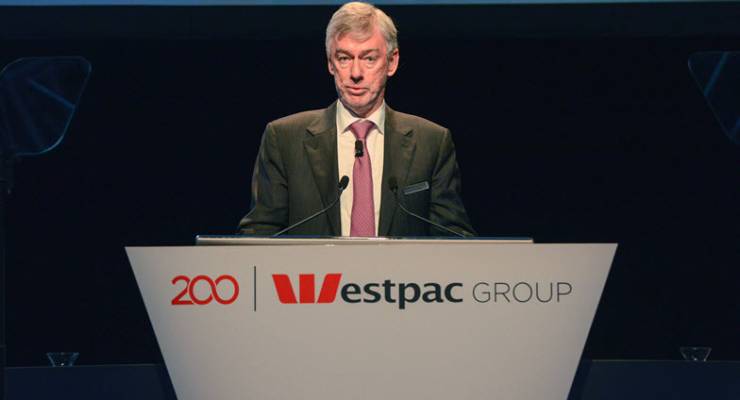
Westpac chairman Lindsay Maxsted
Taxpayers will be sharing part of the burden of the government’s bank levy, according to Westpac, which revealed its expected cost for that bank in a statement to the ASX this morning. Westpac is the first bank to release an estimate of the levy’s impact.
While Westpac said the gross impact could be around $370 million a year, it expects that the after-tax impact will be a net $260 million a year — equal to 8 cents a share in dividends, or 4.3% of its last full-year dividend of $1.88.
The details were contained in a letter from chairman Lindsay Maxsted to the bank’s more than 600,000 shareholders.
“On an annualised basis, that represents a cost of around $370 million or around $260 million after tax. The exact cost will depend on the final form of the new legislation passed and the composition of Westpac’s liabilities. No company can simply ‘absorb’ a new tax, so consideration is being given to how we will manage this significant impost on the bank. We plan to consult with stakeholders, including shareholders, on the Levy. To dimension the impact of the Levy for our shareholders, the $260 million after tax cost is equivalent to around 8 cents per share (using the above estimates). Based on Westpac’s 2016 full year dividends of 188 cents per share, this represents 4.3% of dividends paid.”
But shareholders will also be subsidising the levy to the tune of around 30% (being the corporate tax rate). Based on Westpac’s numbers, about $1.86 billion of the whole levy will be a tax write-off. For the government the net income from the levy over the four years of the budget’s forward estimates won’t be $6.2 billion, but around $4.4 billion when the impact of the tax write-off is taken into account.
The deductibility of the levy hasn’t been discussed by the government so far, but clearly the banks expect that it will be a write-off. And that’s before, of course, any overall cuts to the company tax rate for big business.








Neat trick, banks. I wish I could write off all GST and various consumption levies.
If you’re looking for someone to thank, ScoMo could’ve closed those off (or curtailed them), but didn’t. But how widely noticed was that? Or that they’ll still be getting the corporate cut?
There you go… that’s why he did the levy dance.
They are a ‘service industry’ that provides scant service, they have avoided Goods and Services Tax on their ‘services’, they are guaranteed not to fail by the taxpayer, they make obscene amounts of profit from their guarantors and still they whine. ROYAL COMMISSION time.
“Cheaper than a royal commission – for everyone above a certain pay-scale”?
More gummit outsourcing – this time the outsourcing of tax collection.
Gutless wonders. They reckon they’re on a winner politically but every one should know that Mr & Mrs Punter are going to pay this levy and, not only that, they’re going to pay the banks a premium for collecting the tax for the gummit as well.
I feel so sorry for Westpac. Indeed I know of a single mother working extra hours on Sunday to take advantage of the massive penalty rates (which are soon to be downgraded per favour of LNP) in order to pay for the Westpac mortgage on her two bedroom flat in outer Melbourne. She is now absolutely distraught with the Westpac Bank levy predicament, and wishes, even demands, to pay extra in bank charges. Overt sadness for the bank(s) does not even begin to describe her feelings, she is almost inconsolable. Anyway at least at this time she can still afford her Saturday afternoon café latte but she knows soon that will not be possible because that little amount of money she lashes out on coffee she will soon willingly give to this hapless Westpac Bank.
Tears all round, as we share the sadness with this wonderful bank for the people. We all know, give it a year or two the bank levy will have been the cause of this wonderful bank to probably slide into oblivion or possible takeover or even bankruptcy. We the good Australian banking customers are told by the LNP and we know: …Its all de Labor Party fault / de Labor Party did it, Beel Shortin bad, unions bad, Sunday penalty rates bad. IPA good, Anna Bligh good, LNP good. May God, Jesus and angels everywhere look after the big four banks, especially Westpac. We the Australian sheeples will, pray, pray, pray for this wonderful bank.
“May God, Jesus and angels everywhere look after the big four banks, especially Westpac. We the Australian sheeples will, pray, pray, pray for this wonderful bank.”
I have it from a good source that there are no banks in Heaven…also no bank investors, directors, CEO’s and shareholders. Might be a place for you tho Bill.